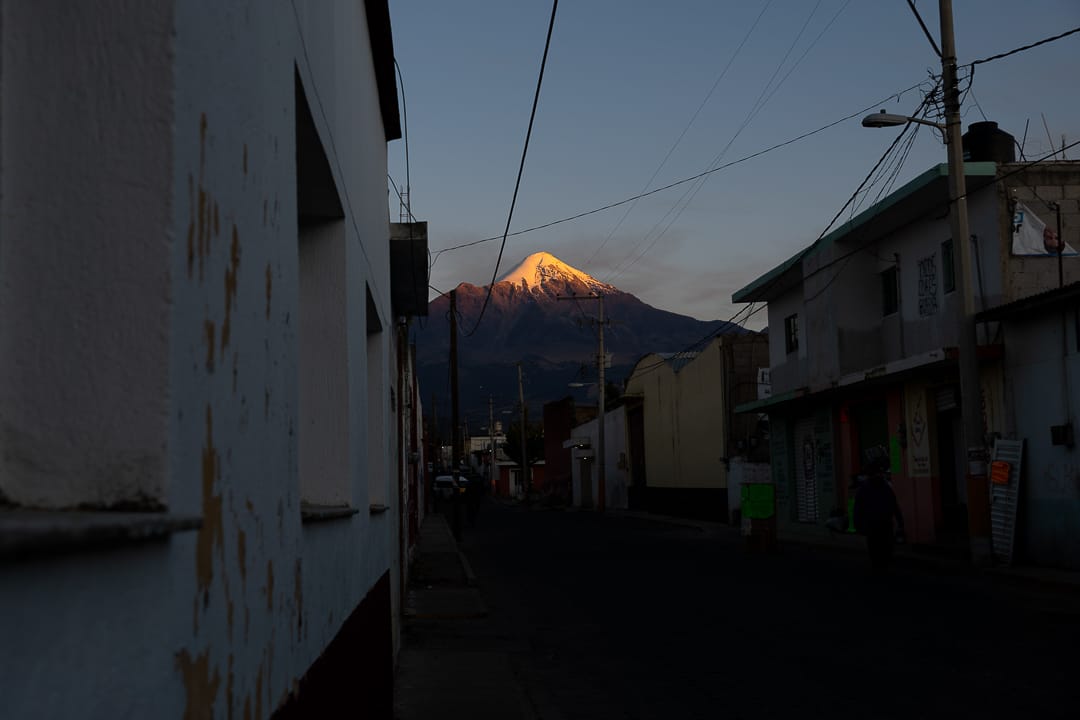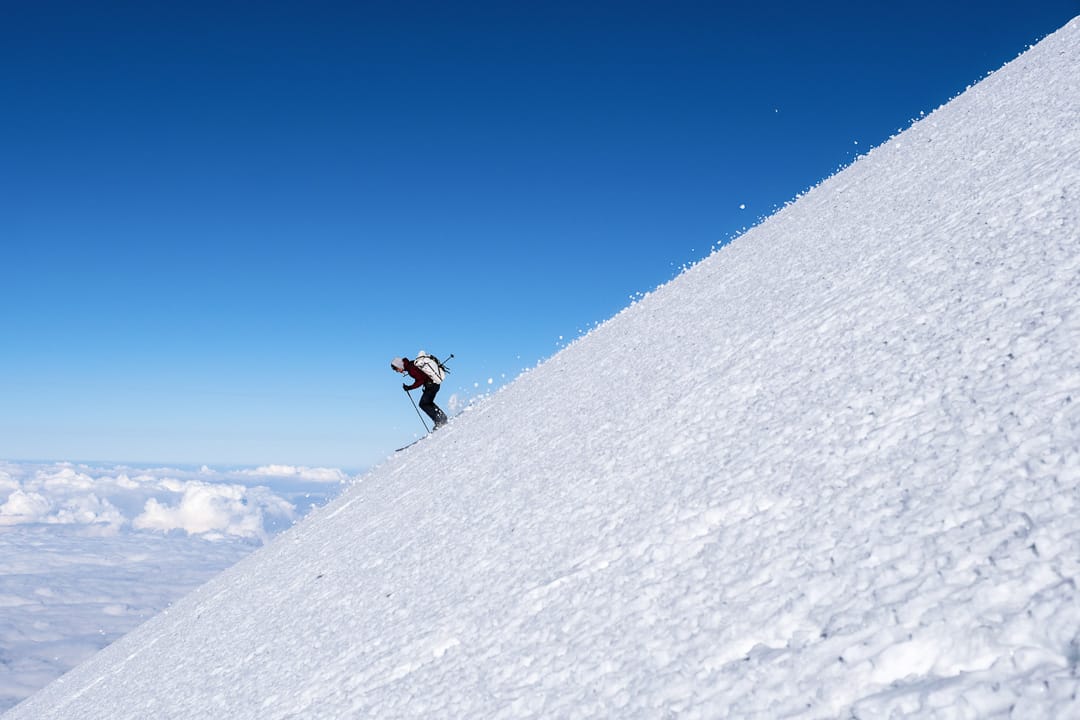Four fit friends channel their moxy for a whirlwind Bozeman/SLC to Mexico and back ski descent of Pico De Orizaba. Yes, two of them made it back for work on time.
This story first appeared on Skimo.co
When I’m looking to travel internationally, I look for three things: powder skiing, long alpine routes, and great food. Surprising to absolutely nobody, Mexico only ticks one of those boxes. Hint: it’s not waist-deep turns. Due to the less-than-ideal latitudinal location of the country, there seems to be a real lack of snow. Puzzling, I know, but for what it’s worth, the tacos make up for it in every sense.
Mexico does have something up its sleeve: Pico de Orizaba. If it were located 500 miles to the north, it would be a world-famous ski destination. Instead, the lofty summit only holds snow and ice for the top 2,500’ out of 18,450’. With its close(ish) proximity to the United States and not-too-high altitude, a quick-hit ski descent had been on our minds for a while.

With a few days to spare between shifts in the grinding laboratory of Skimo Co, myself, co-worker Zak Munro, and some friends from Bozeman decided to catch a flight to Mexico and ski North America’s 3rd tallest peak.
***
November 9th: 6 pm MST (All times in MST, so you, dear reader, don’t have to do time zone conversion math)
Zak and I finished work and agreed to meet at 4:30 am the next day to catch our flight to Mexico City. We discussed the final details, and I quickly stopped at the local REI for some power snacks.
November 10th, 6 am MST
Twelve hours later, we were packed in a plane flying to Dallas. Walking around the airport in Texas with ski boots and helmets drew a fair amount of looks. I can’t even count the times we were asked where we were going “hiking.” Zak even fielded a question of where somebody could get some of our Scarpa F1LTs for their vacation to Winter Park, Colorado. They loved the “stylish” look of the boots, and I’d have to agree.
November 10th, 3pm
After landing and going through customs, we began the 10-minute walking approach to our Airbnb in Mexico City. Zak requested I book it close to the airport, so I made sure we found a place where you could both audibly and physically feel the planes taking off and landing. With basically the least amount of Spanish you can know while still having taken a Spanish class, we set off into the local neighborhood and successfully acquired dinner from a street food stand. I just kept saying yes to whatever the waiter asked and ended up with a great meal. This was a consistent theme of the trip: say yes unless you see a pig’s foot with flies on it.
November 11th, 9am
The next morning, we returned to the airport to find our buddies from Bozeman, Montana, Tucker Hoefler and Chris Kussmaul. Tucker is an incredibly strong athlete and consistently put the rest of us in the ground throughout the trip. A few springs ago, he made the third ski descent of Archangel Ridge on Mount Foraker with two other partners. Chris Kussmaul is also incredibly strong and experienced. Zak and I are basically nobodies compared to these two Kardashian-grade superstars.
We just ski in the Wasatch.
With only four days to make this trip happen, everything had to fall perfectly in place. So it was only fitting that a mere 15 minutes after meeting up with Chris and Tucker, we almost got totally hosed on securing our rental car. The rental car manager explained that our pre-purchased insurance was not a thing and that we had two options: either leave a deposit of $22,000 USD and collect the money upon return of the car (no) or buy their insurance for 4x what we paid online (yes). After the hour-long haggle of insurance rates, we hopped in a Kia Ultima and were almost t-boned roughly four times as we sped out of Mexico City.
Our destination? Tlachichuca.






Leave a Reply
You must be logged in to post a comment.